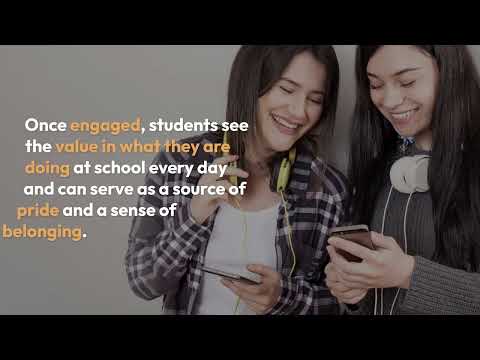Approximately 1.2 million students drop out of high school annually in the United States. That averages to 7,000 a day. At-risk students were formerly considered a minority across student populations. However, the recent global pandemic forced the entire academic system to move to online learning for a period of time.
But as students moved back to a physical classroom, it became apparent that even many students who may have thrived pre-pandemic are now struggling. These reasons have led to a massive increase in at-risk students. As a result, most students are now considered at-risk, leaving educators and parents questioning how they can help these students succeed.
The following methods can be used to help these at-risk students succeed in an educational setting:
- Focus on relationships: Many at-risk students view teachers or administrators negatively based on previous encounters. Changing this mindset can be transformational, and research demonstrates that this is best accomplished by fostering strong one-on-one relationships. Reframing the student-educator and student-parent relationship can be achieved by focusing on three key categories:
- Communication – to ensure students can express themselves, create connections, and set consistent and clear expectations for the required work.
- Support – to implement rules and discourage negative behaviors, demonstrate an interest in the student’s lives, and provide a positive model of kindness and courtesy.
- Engagement – break up lessons and instruction styles to foster interest, create flexibility in accomplishing tasks, and integrate technology for interactive instruction.
- Create an environment where the student’s voice matters: Many public school classrooms operate according to a syllabus created by the educator. The teacher selects the tasks or lessons outlined in the rubric to fulfill the requirements. While many topics cannot be open for negotiation regarding education, some can.
It has been shown that many at-risk students respond favorably to a democratic classroom model that allows room for their opinions. This style shows students that their voice matters, rather than simply telling them it does. And when they have the responsibility for making decisions in the classroom, they often gain exposure to real-world challenges that allow them to practice problem-solving, communication, and meeting expectations set by fellow students.
This model also supports positive interactions by empowering at-risk students rather than making them feel powerless in the education setting.
- Set realistic goals: Many students who dropped out of high school did it because completing the requirements seemed unrealistic. The thought of meeting everything may be impossible for many students. But when you break it down into small, digestible chunks, you can create a pathway to achieving the goal.
You can also help these students develop realistic goals related to their personal development and career goals after finishing high school. In addition to assisting them in identifying significant goals and the smaller tasks required to achieve them, creating reachable goals can be a great motivator.
Once a student begins to achieve these smaller goals, they become motivated to continue, and as time passes, these small achievements turn into academic successes.
- Provide positive reinforcement: Engagement is critical to academic success, but many at-risk students do not feel engaged by their school or community. When students get positive recognition for positive contributions, teamwork, and learning, they often feel more engaged in the educational setting.
Once engaged, students see the value in what they are doing at school every day and can serve as a source of pride and a sense of belonging.
While these methods work well for in-person academic settings, they can also be effective for students pursuing online learning or learning in non-traditional settings. Educators in these settings can also clearly communicate expectations and requirements for success while providing positive reinforcement and a democratic classroom model.
It is also crucial to remember that not all at-risk students will respond to the same conditions. Each unique student’s ability to succeed is impacted by four categories – school-related, student-related, community-related, and family-related factors. In addition, each student will have a unique blend of circumstances across these four categories that may impact how well they do in any learning setting.
As a teacher or administrator, the goal is to ensure all students can be successful. Therefore, providing extra support and resources for at-risk students who may have significant personal barriers to academic success is imperative. Once these elements are in place, many at-risk students will begin to flourish.
Along this journey, educators and parents have the opportunity to build up the at-risk student’s sense of competence and confidence, both of which are the key to setting them up for continued success.


